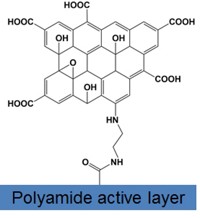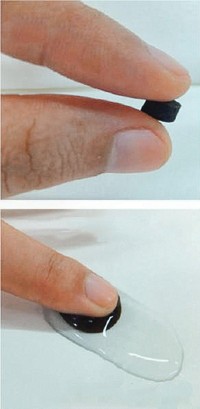Advertisement
Grab your lab coat. Let's get started
Welcome!
Welcome!
Create an account below to get 6 C&EN articles per month, receive newsletters and more - all free.
It seems this is your first time logging in online. Please enter the following information to continue.
As an ACS member you automatically get access to this site. All we need is few more details to create your reading experience.
Not you? Sign in with a different account.
Not you? Sign in with a different account.
ERROR 1
ERROR 1
ERROR 2
ERROR 2
ERROR 2
ERROR 2
ERROR 2
Password and Confirm password must match.
If you have an ACS member number, please enter it here so we can link this account to your membership. (optional)
ERROR 2
ACS values your privacy. By submitting your information, you are gaining access to C&EN and subscribing to our weekly newsletter. We use the information you provide to make your reading experience better, and we will never sell your data to third party members.
Nanomaterials
Loofah-inspired aerogel efficiently filters microbes from water
Low-cost, functionalized silica material kills bacteria instantly and is easy to clean
by Prachi Patel, special to C&EN
August 21, 2020

Millions of people worldwide die every year from waterborne diseases because of a lack of affordable, practical disinfection technologies. To help address this need, researchers have developed a strong, flexible filter out of a silica aerogel that efficiently kills bacteria, resists getting clogged, and needs just a quick dip in dilute bleach to renew its disinfecting properties (ACS Nano 2020, DOI: 10.1021/acsnano.0c03793).
Filtration is an effective portable technique used widely to disinfect drinking water, says Fei Wang, a graduate student at the Donghua University Innovation Center for Textile Science and Technology. But state-of-the-art filters made of porous ceramic or polymer membranes intercept rather than kill bacteria. Over time, bacteria clog the membranes, decreasing their efficacy.
So Wang, Bin Ding, Yang Si, and their Donghua colleagues looked at a popular bath accessory for inspiration: loofah sponges. Loofahs, made from dried gourds, contain a highly porous 3-D network of rough, interconnected cellulose fibers. The rough fibers are superhydrophilic: water quickly fills the pores and flows through, while natural antibacterial compounds in the sponges help prevent bacterial growth.
For a sturdier and longer-lasting take on the loofah, the researchers made a spongy silica aerogel with rechargeable antibacterial properties. They first created an aerogel composed of interconnected bundles of silica nanofibers studded with silica nanoparticles. The fibers are coated with N-halamine precursor groups that can be converted to biocides. The nanoparticles’ roughness, along with the network of intrinsically hydrophilic silica nanofibers and Si–O–Si bonds, makes the aerogels superhydrophilic.
To convert the N-halamine groups to bactericidal N-chloramine, the researchers soaked the aerogel in a dilute bleach solution. The resulting N-chloramine generates oxidative chlorine that kills bacteria and reverts to the precursor group. “The aerogels lose bactericidal function gradually,” Wang says, but “[they] can be renewed by direct contact with a dilute bleach solution.”
The aerogel’s superwettability, large surface area, and highly bactericidal N-chloramine groups make it exceptionally effective, she adds. The microbes die on contact, but a superthin water layer on the fibers’ surface keeps them from sticking, so they are rapidly swept out of the highly porous aerogel instead of fouling it.
The researchers tested a piece of aerogel by placing it in a glass tube and pouring Escherichia coli–laced water through it. The filter killed 99.9999% of bacteria as water flowed through it at the rate of 57,600 L/(m∙h), up to 100 times as high as that achieved by commercial filtration membranes. The bactericidal activity decreased very slightly to 99.99% after filtering about one half-liter of water.
Wang says that making the aerogels on an industrial scale should be straightforward. “We are developing mass-producing technology for the aerogels, and we envision that [production of] the aerogels would be industrialized in the near future.”
Although the stability of the silica aerogel under real-world conditions remains to be seen, it is a simple, effective approach to overcome biofouling limitations of current membrane technologies, says Simone Fabiano, a chemist at Linköping University. “The aerogel can sustain a high flux without giving up the high antibacterial efficacy, a current challenge to all filtration approaches.” He says given that more than 700 children under 5 years of age die every day from diarrhea related to inadequate water and sanitation services, “a robust strategy to create a sustainable technology for water disinfection is timely.”





Join the conversation
Contact the reporter
Submit a Letter to the Editor for publication
Engage with us on Twitter